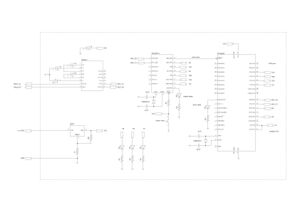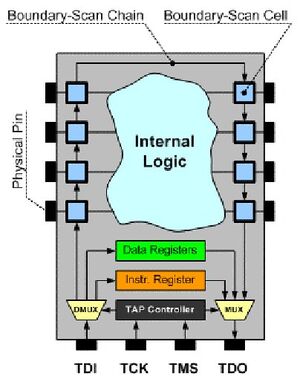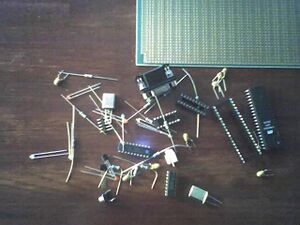Difference between revisions of "JTAG explorer toy"
| Line 40: | Line 40: | ||
=== What I would like to see === | === What I would like to see === | ||
| − | As I understood, JTAG offers a nice 'backdoor' into a (slave-)chip's state, and so that' | + | As I understood, JTAG offers a nice 'backdoor' into a (slave-)chip's state, |
| + | and so that's what I would like to see; I'd like to... | ||
| + | |||
what I would like to see; I'd like to... | what I would like to see; I'd like to... | ||
* put it in, and take it out of reset (reset/suspend/resume) | * put it in, and take it out of reset (reset/suspend/resume) | ||
| − | * | + | * decouple core logic from I/O pins, and read/set them from [[:Image:Michai_015_bsc.jpg|boundary cells]] instead |
* and some more, basically '''toy with it'''. | * and some more, basically '''toy with it'''. | ||
---- | ---- | ||
work in progress, tumdedum... | work in progress, tumdedum... | ||
Revision as of 18:08, 4 January 2009
Contents
What is this, and, why..?
I heard a lot about JTAG, but never got to do anything with it, mainly because I CBA, and I didn't actually had to do anything with it.
This is of course bad, because...
JTAG is THE SHIT - like Batman!
...or well, it's nice anyway.
Disclaimer
I interpreted the ATmega32-datasheet and (quite) some on-line docs as best as I could; however, if there's a bug/flaw somewhere, let me know please. Note that this thing is totally useless, so questions/comments regarding will be ignored. Xmas season, too much time, so there :-)
Overview/summary
The idea for me was to make a simple toy-board with 2 MCU's on it -- one acting as JTAG host/master, and the other being JTAG-victim. The PC talks to the master and slave through a serial protocol, to read/set pins, and so initiate JTAG-actions; master talks to slave only through its JTAG-port. The master itself is not JTAG-enabled, but drives/reads the slave's JTAG-port I/O-pins.
What I would like to see
As I understood, JTAG offers a nice 'backdoor' into a (slave-)chip's state, and so that's what I would like to see; I'd like to...
what I would like to see; I'd like to...
- put it in, and take it out of reset (reset/suspend/resume)
- decouple core logic from I/O pins, and read/set them from boundary cells instead
- and some more, basically toy with it.
work in progress, tumdedum...





